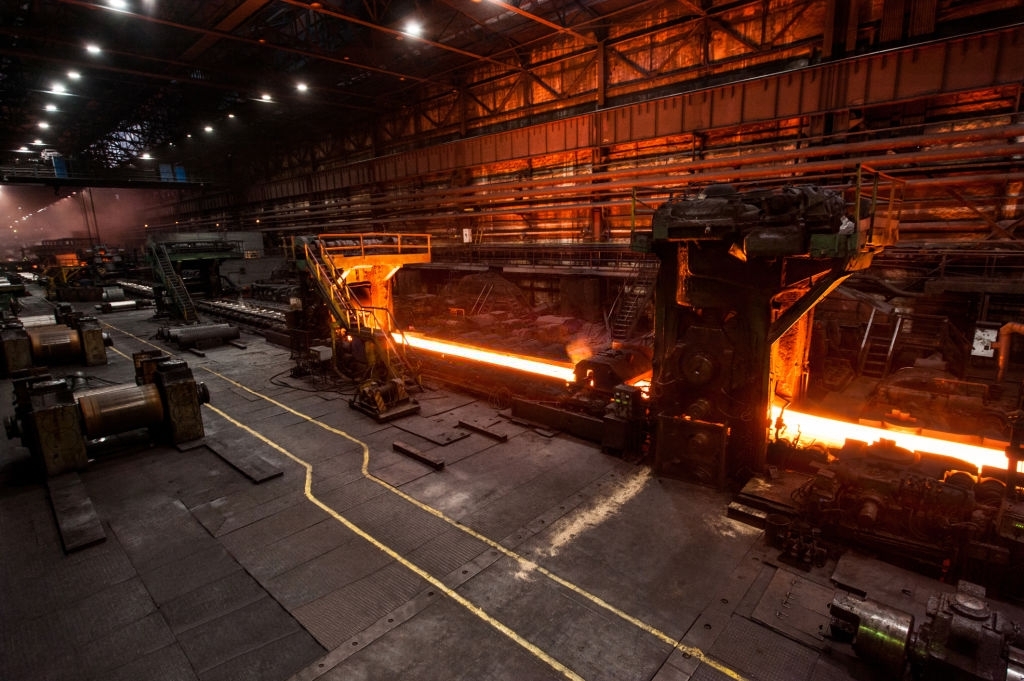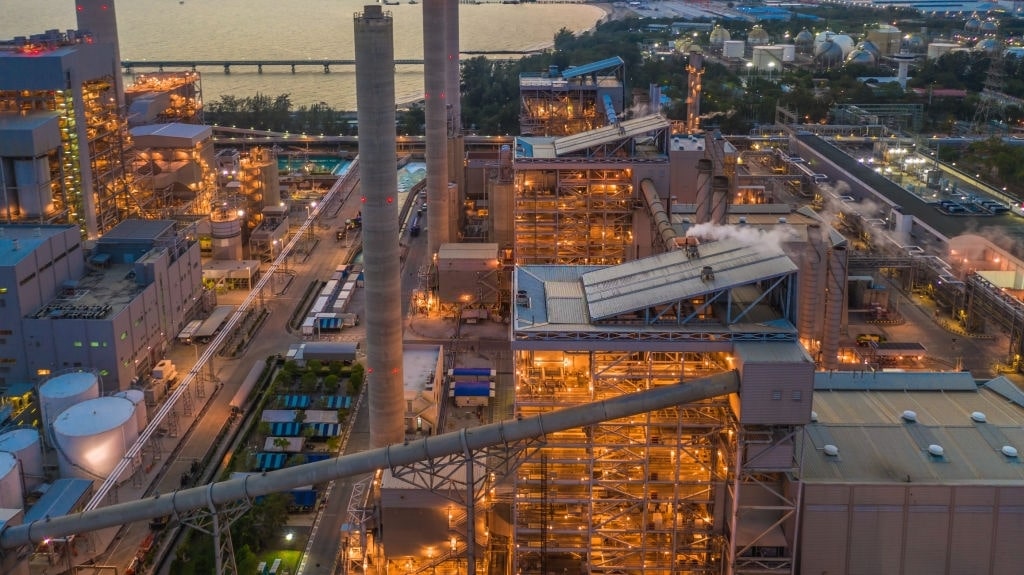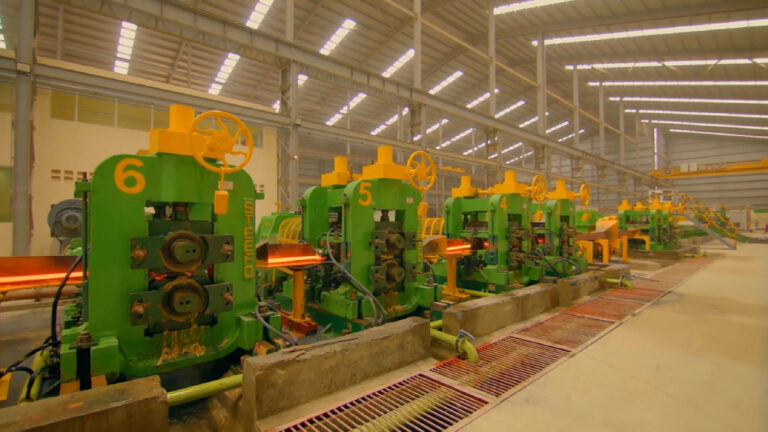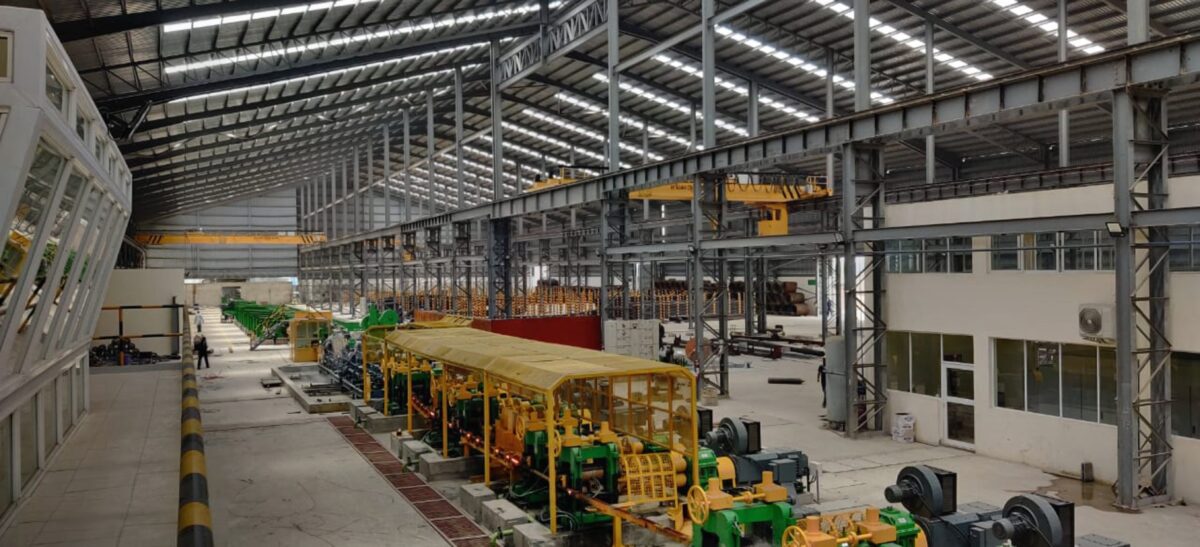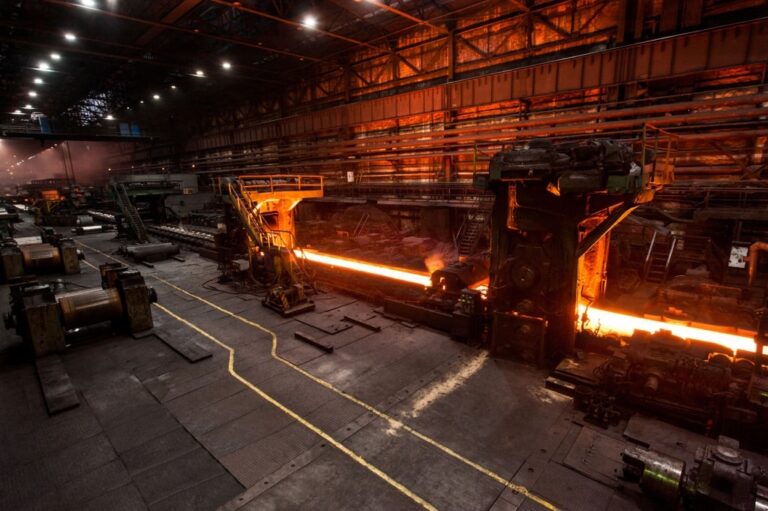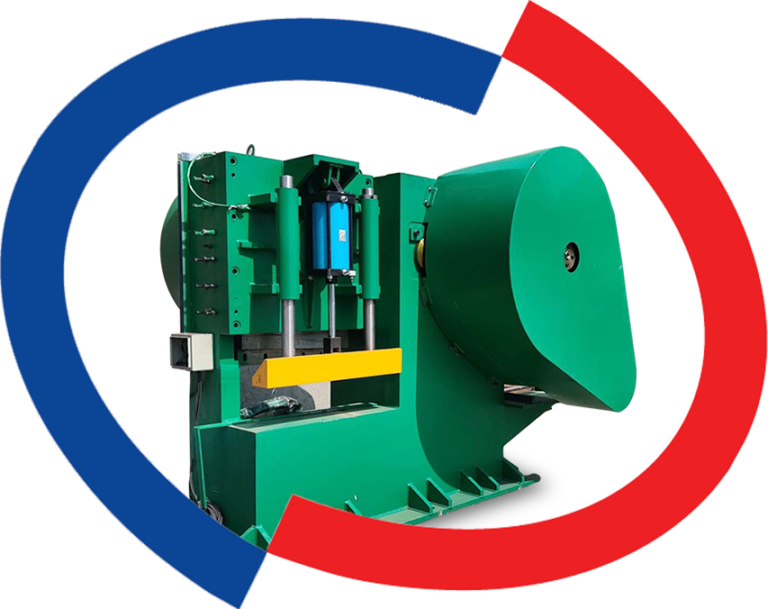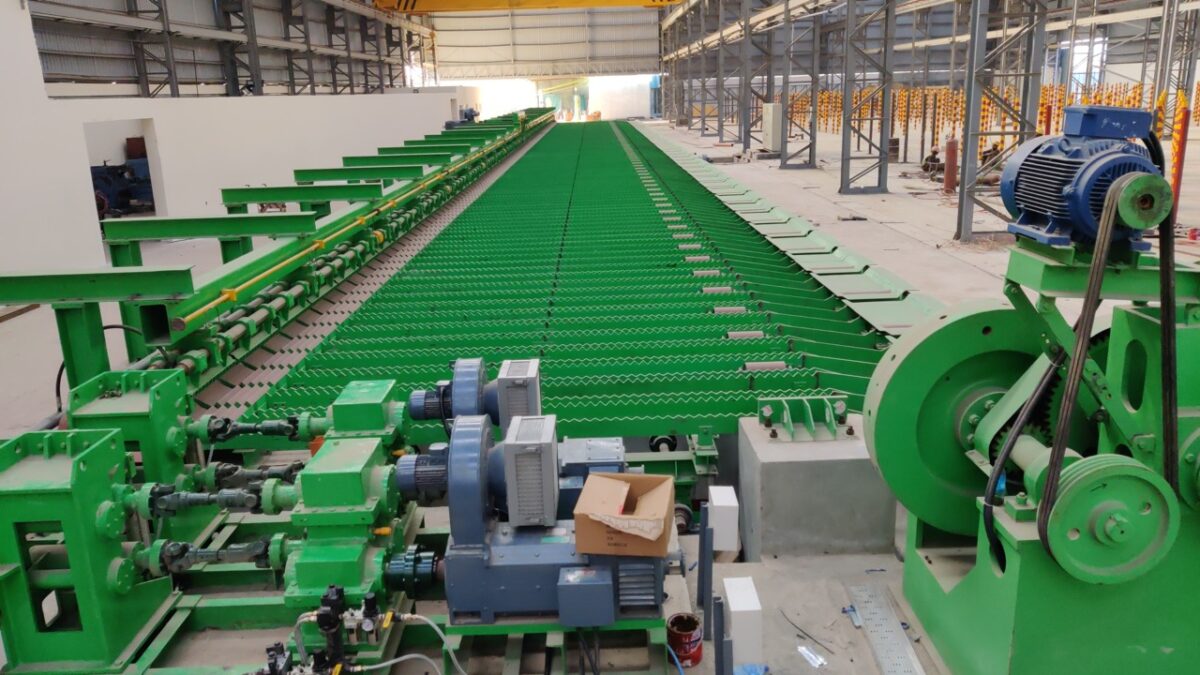The steel industry is a cornerstone of modern manufacturing, where precision, durability, and efficiency are critical to success. At the heart of this process, rolling mills play a crucial role in shaping and processing steel, with shearing machines ensuring the final products meet the highest standards. These machines are responsible for cutting steel into precise lengths, enabling smooth and efficient production flows.
The Steefo Group, a leading hot rolling mill manufacturer based in India, is renowned for its expertise in designing and manufacturing custom shearing machines. Understanding that every steel production facility has unique operational demands, we go beyond offering off-the-shelf solutions by crafting custom solutions tailored to the specific requirements of specialised rolling mills.
This blog explores the vital role of shearing machines in rolling mills, the challenges posed by off-the-shelf solutions, and how The Steefo Group’s approach to custom designs is transforming the efficiency and quality of steel production.
The Role of a Shearing Machine in a Rolling Mill
A shearing machine serves a crucial function in a rolling mill, where steel products like billets, bars, and plates are shaped and cut to specified lengths. Shearing is the process of applying a high-force cutting action to steel, enabling manufacturers to cut and shape steel into the required dimensions. Without precision and speed, the entire production process could slow down, leading to inefficiencies and a reduction in overall output.
Types of Shearing Machines Used in Rolling Mills
- Flying Shear: This type of shearing machine is designed for high-speed operations. As the steel is continuously fed through the rolling mill, the flying shear cuts the material while it is still in motion. This shear is typically used for cutting billets or bars that are moving at high speeds, ensuring that the material is cut to the correct length without interrupting the flow of production. The flying shear’s ability to operate at high speeds makes it ideal for environments where rapid processing is required.
- Rotary Shear: Rotary shears use rotating blades to cut steel material. This shear is particularly well-suited for cutting large-diameter products or materials that require precision cutting without the risk of distortion. The rotary shear can be used in high-speed conditions, making it versatile and adaptable to various rolling mill environments.
- Cold Shear: Cold shearing is typically used for cutting steel that is not heated during the rolling process. Cold shears offer a high level of precision and are often employed when dealing with non-ferrous or coated steel products. They help ensure that the steel is cut without altering its physical properties, which is essential in industries where product specifications are stringent.
Each of these shearing machines serves a distinct purpose depending on the type of steel, speed, and processing requirements. By ensuring the precision of cuts, these machines directly contribute to production speed and quality control, which are essential in maintaining high standards in the steel industry.
Why Custom Shearing Machines Matter for Specialised Rolling Mills
While standard shearing machines work fine in many cases, specialised rolling mills often require equipment designed for specific operational demands. Off-the-shelf machines may not be up to the task of meeting these unique challenges, and in some cases, they could lead to inefficiencies, inconsistent cuts, or even equipment failure. This is where custom shearing machines from The Steefo Group make all the difference.
Challenges in Non-Standard or High-Performance Rolling Mills
In specialised rolling mills, production volumes, materials, and product types can vary widely. Whether a mill is processing high-strength alloys or continuously producing smaller batches, the machinery must be tailored to meet these demands. Traditional shearing machines may struggle with high-performance operations, often leading to bottlenecks or frequent breakdowns due to their inability to adapt to variable speeds and materials.
For example, a high-speed rolling mill producing small-diameter bars requires a shearing machine that can handle rapid cutting speeds without sacrificing accuracy. Similarly, rolling mills that process high-strength steel grades demand machines capable of cutting through tougher materials without causing defects or excessive wear on the blades.
Why Off-The-Shelf Shearing Machines May Not Deliver Consistent Results
Off-the-shelf shearing machines typically come with predefined cutting speeds, blade geometries, and control systems that work well in standard conditions. However, when a rolling mill operates under more extreme or specific conditions, these standard machines may struggle to maintain performance. Over time, this leads to:
- Inconsistent Cuts: Precision is key in steel manufacturing, and off-the-shelf shears may produce uneven cuts, resulting in material wastage or inconsistencies in the final product.
- Increased Wear and Tear: If the machine isn’t designed for the specific material or production speed of the mill, it will experience excessive wear, resulting in higher maintenance costs and downtime.
- Energy Inefficiency: Generic machines may not be optimised for the rolling mill’s operational parameters, leading to higher energy consumption and increased operational costs.
The Benefits of Custom Designs
The primary advantage of custom shearing machines is their ability to address the unique needs of each client. These machines can be specifically designed for:
Optimised Blade Geometry:
Customised blade designs ensure that the shearing machine provides precise cuts, improving material yield and reducing scrap. By adjusting the angle, shape, and thickness of the blades, the machine is able to cut through a variety of steel grades with exceptional accuracy, reducing wastage and improving overall productivity. This level of customisation not only enhances cutting precision but also extends the lifespan of the blades, ultimately reducing maintenance costs.
Control Systems:
Advanced control systems can be tailored to meet the specific speed, pressure, and other parameters of the rolling mill. These systems ensure real-time monitoring and adjustment of machine operations, optimising cutting performance and reducing the chances of errors or malfunctions. Moreover, they enable seamless integration with the mill’s automation systems, allowing for faster response times and minimal downtime during production.
Energy Efficiency:
Custom solutions allow for the integration of energy-efficient components, which reduce operating costs and improve sustainability. Features such as energy-recovery systems, variable frequency drives (VFDs), and optimised hydraulic circuits can be incorporated, significantly reducing power consumption while maintaining peak performance. These energy-saving innovations not only cut costs but also contribute to a greener, more environmentally responsible production process.
Enhanced Reliability and Performance:
A custom-built machine is designed to meet the specific operational demands of the rolling mill, ensuring long-term performance and reliability. With tailored components designed to handle the exact workload, cutting speeds, and material types, custom shearing machines operate with fewer breakdowns and higher uptime. This results in smoother operations, improved throughput, and a greater return on investment over the machine’s lifetime.
The Steefo Group’s Design Philosophy for Custom Shearing Machines
At The Steefo Group, customisation is not just about altering the appearance of a shearing machine – it’s about tailoring every aspect of the design to optimise performance, durability, and maintenance. This approach is rooted in a design philosophy that values collaboration, innovation, and quality at every stage of the project.
Analysis, Consultation, and Collaboration
The Steefo Group begins each project by engaging with the client to understand the specific requirements of their rolling mill. Through detailed consultations, the team identifies key operational parameters such as material types, production speeds, and required output quality. This collaborative approach ensures that the final product is precisely aligned with the client’s needs.
Use of Advanced CAD and Simulation Tools
Once the requirements are gathered, The Steefo Group leverages cutting-edge CAD (Computer-Aided Design) and simulation technologies to refine the machine design. These tools enable the team to create highly detailed, accurate models of the shearing machine before any physical manufacturing begins. The simulation process helps predict potential issues, identify areas for improvement, and fine-tune the machine’s performance.
Focus on Durability, Precision, and Easy Maintenance
The company places a strong emphasis on creating shearing machines that are durable, precise, and easy to maintain. The Steefo Group understands that downtime is costly in a rolling mill, which is why we design machines with long service lives and minimal maintenance needs. Every component is chosen for its reliability, ensuring the shearing machine will perform consistently under the most demanding conditions.
Integration with Automated Rolling Mill Systems
As the steel industry moves toward greater automation, The Steefo Group ensures that its custom shearing machines are fully compatible with automated rolling mill systems. This integration streamlines operations, allowing for smoother material flow and more efficient production. Automated control systems can optimise the performance of both the rolling mill and the shearing machine, ensuring greater precision and reduced waste.
Key Features That Set Steefo’s Shearing Machines Apart
When it comes to shearing machines, The Steefo Group is recognised for its high standards of design, precision, and performance. Some of the standout features include:
- High-Speed Cutting Accuracy: Custom-built for a range of materials and processing speeds, Steefo’s shearing machines ensure consistent, high-speed cutting with minimal deviation.
- Hydraulic and Electronic Synchronisation: The integration of hydraulic systems with electronic controls ensures smooth, synchronous operation, reducing the risk of machine malfunctions and improving overall productivity.
- Robust Build Quality: Designed for long-term use, Steefo’s shearing machines are built to withstand the rigours of high-performance rolling mills, ensuring longevity and reliability.
- Customisation Options: Whether it’s blade geometry, cutting speed, or material handling capacity, Steefo’s machines are fully customisable to meet the specific needs of each rolling mill.
Innovation and Sustainability in Steefo’s Manufacturing Process
At The Steefo Group, innovation is a cornerstone of their approach to manufacturing. We are committed to developing sustainable, energy-efficient solutions that not only meet the demands of modern rolling mills but also help reduce the environmental footprint of the steel industry.
Energy-Efficient Systems
Energy consumption is a significant concern in the steel industry, and The Steefo Group addresses this by incorporating energy-efficient technologies in their shearing machines. Custom solutions are optimised to reduce power usage, helping clients lower operational costs and improve sustainability.
Ongoing R&D Efforts
The Steefo Group continues to invest heavily in research and development (R&D) to improve the performance of the shearing machines. From exploring the latest automation technologies to improving material handling systems, the company is always looking for ways to innovate and enhance its products.
Commitment to Global Certifications and Quality Standards
The Steefo Group’s shearing machines are built to meet international quality standards. The company holds several global certifications, assuring clients that every machine meets the highest levels of quality and performance.
FAQs
1. What is the purpose of a shearing machine in a rolling mill?
A shearing machine cuts steel products to precise lengths in rolling mills, playing a crucial role in maintaining the quality and consistency of the final product.
2. How does The Steefo Group design custom shearing machines for specialised rolling mills?
The Steefo Group works closely with clients, using advanced design tools and simulations to create machines that meet specific operational requirements.
3. What types of shearing machines are used in modern rolling mills?
Flying shears, rotary shears, and cold shears are the most common types used, each serving a different purpose based on the material and speed requirements.
4. Why should steel manufacturers choose The Steefo Group for custom shearing solutions?
The Steefo Group offers tailor-made solutions that optimise performance, reduce operational costs, and meet specific production needs, ensuring superior quality and efficiency.
5. How do customised shearing machines improve production efficiency in rolling mills?
Customised machines optimise cutting precision, material handling, and energy consumption, leading to smoother operations, reduced waste, and enhanced productivity.
Get a Custom Shearing Machine Solution from The Steefo Group
When it comes to optimising your steel production line, the right shearing machine can make all the difference. The Steefo Group specialises in creating custom shearing machines that are designed to meet the specific demands of your rolling mill. Whether you’re looking to improve cutting precision, enhance operational speed, or increase overall efficiency, our tailor-made solutions are built to drive success.
By choosing The Steefo Group, you are partnering with an industry leader known for its innovative approach and commitment to excellence. We work closely with you to understand your unique needs, and our team of experts ensures that every machine is crafted to fit seamlessly into your existing production process.
Reach out to us at +91 87589 98607 or send us your queries to marketing@thesteefogroup.com. Let us provide you with a custom shearing machine solution that elevates your production to new heights.

